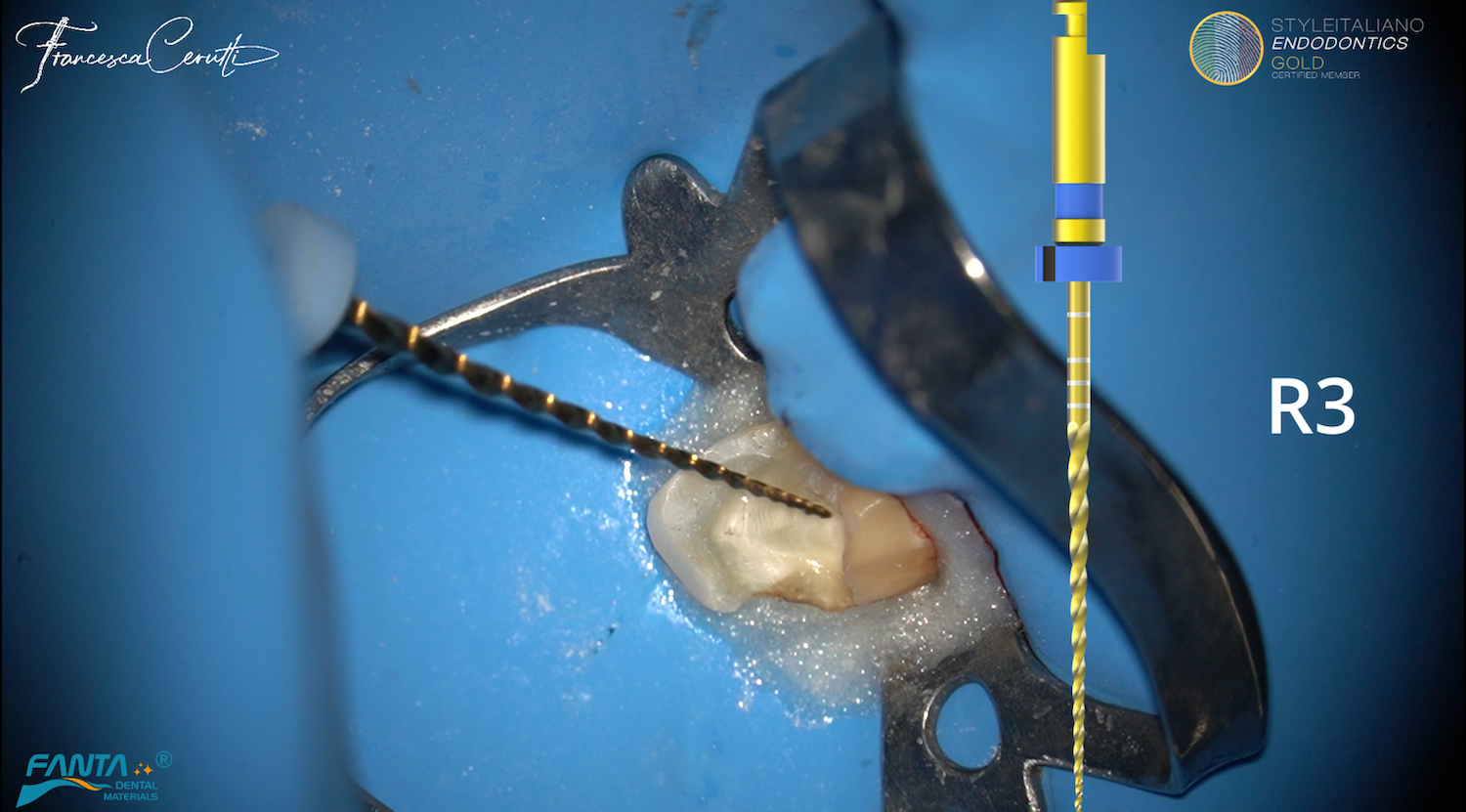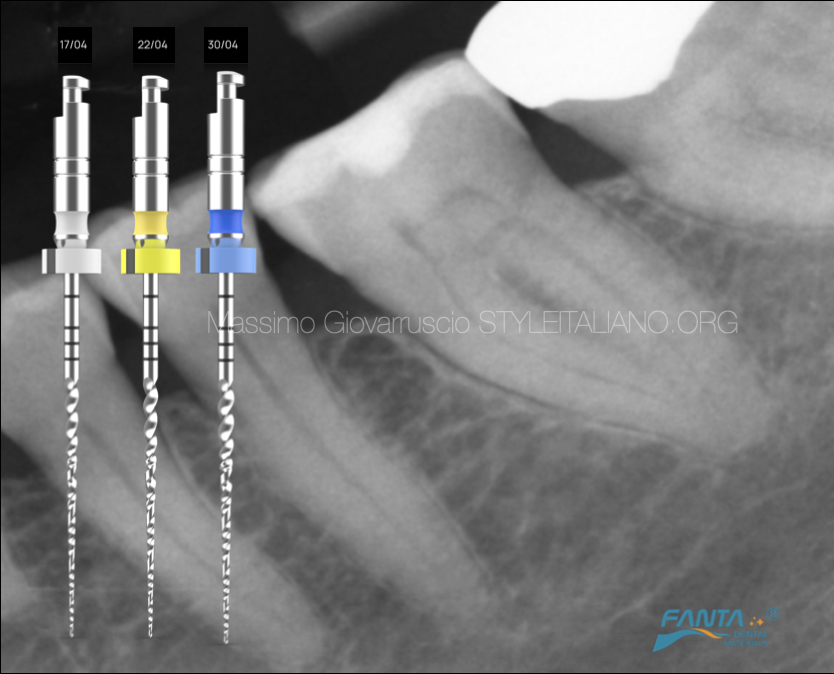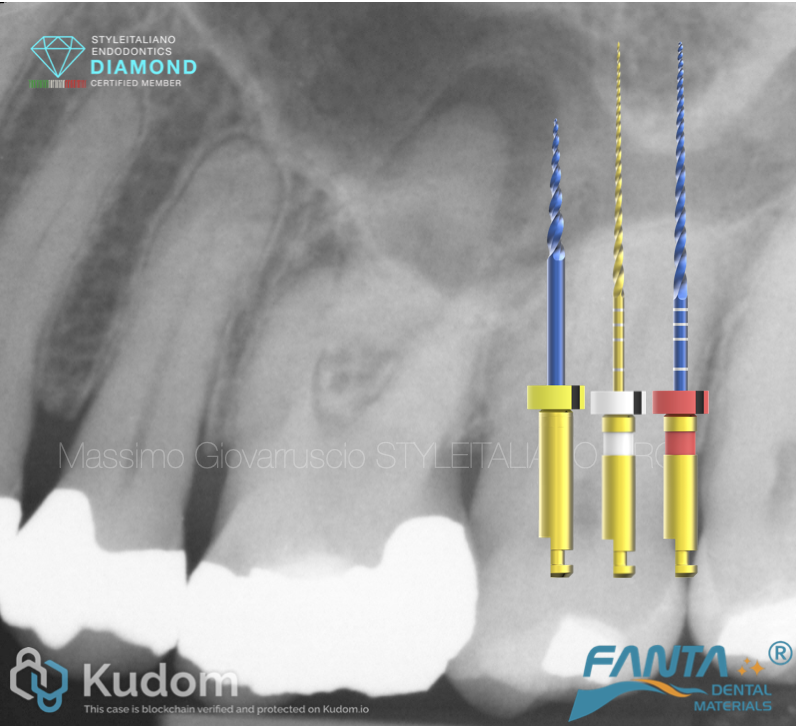
Fanta Rising Endodontic File - A Game Changer for Severely Curved Canals and Lateral Portals of Exit
04/08/2025
Massimo Giovarruscio
Warning: Undefined variable $post in /var/www/vhosts/styleitaliano-endodontics.org/endodontics.styleitaliano.org/wp-content/plugins/oxygen/component-framework/components/classes/code-block.class.php(133) : eval()'d code on line 2
Warning: Attempt to read property "ID" on null in /var/www/vhosts/styleitaliano-endodontics.org/endodontics.styleitaliano.org/wp-content/plugins/oxygen/component-framework/components/classes/code-block.class.php(133) : eval()'d code on line 2
Endodontic treatment in anatomically complex root canals—especially those with severe curvatures and lateral portals of exit—presents a significant challenge for clinicians. Proper debridement, shaping, and obturation are critical for long-term success, and traditional files often fall short in negotiating tight curves without the risk of transportation, ledging, or instrument separation. The Fanta Rising Endodontic File system has emerged as a highly specialized tool designed to address these exact concerns.

Fig. 1
Clinical Applications
1. Severely Curved Canals
- In cases such as mesiobuccal roots of maxillary molars, the Rising File maintains the curvature without creating ledges or risking file separation.
- Its ability to pre-bend and return to shape allows clinicians to negotiate even extreme angles safely.
2. Lateral Portals of Exit
- Portals of exit are secondary canals that branch off the main canal and exit laterally. If left untreated, they can harbor bacteria, contributing to post-treatment failure.
- The Fanta Rising File’s flexibility and reach ensure better cleaning and shaping, making it easier to irrigate and obturate comprehensively, even the lateral portal of exit.
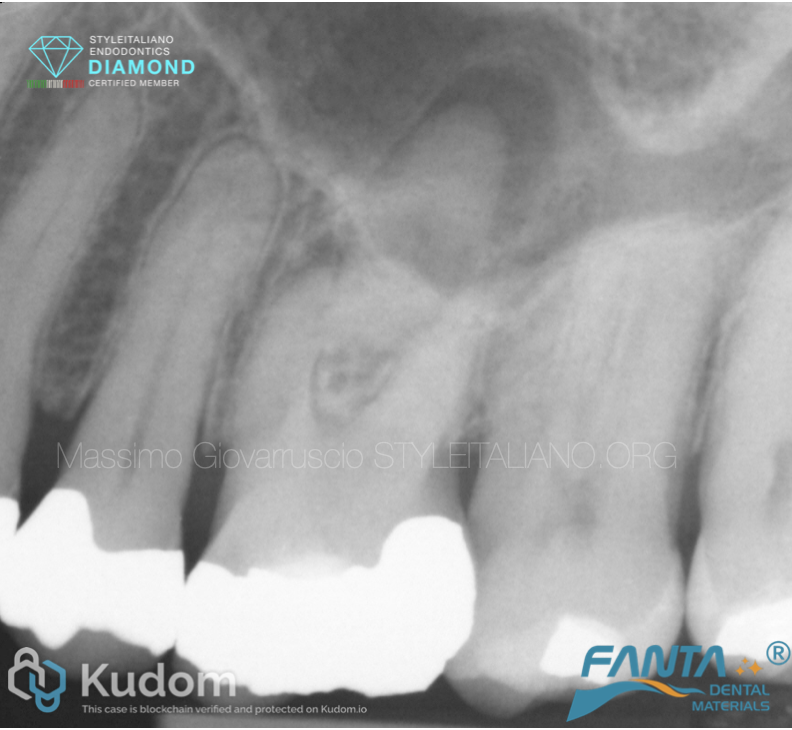
Fig. 2
The PA shows an upper molar with a severely curved Mesio-Buccal root and large apical area on Palatal root.
CBCT Scan shows a large bone defect in proximity of the curved Mesio-Buccal root, Disto-Buccal and Palatal apical area

Fig. 3
A large lateral lesion is present on MB root, on the curved area. A lateral portals of exit is a small canal that branch off from the main root canal and open laterally on the root surface. These anatomical structures often go unnoticed during routine treatment but can be significant contributors to persistent periapical or lateral lesions.

Fig. 4
Started with RR to enlarge coronal part then followed by R1 to create glide path and final shape with R2 (25.04)
Irrigation using 5,75% NaOCl, activated by sonic tool.
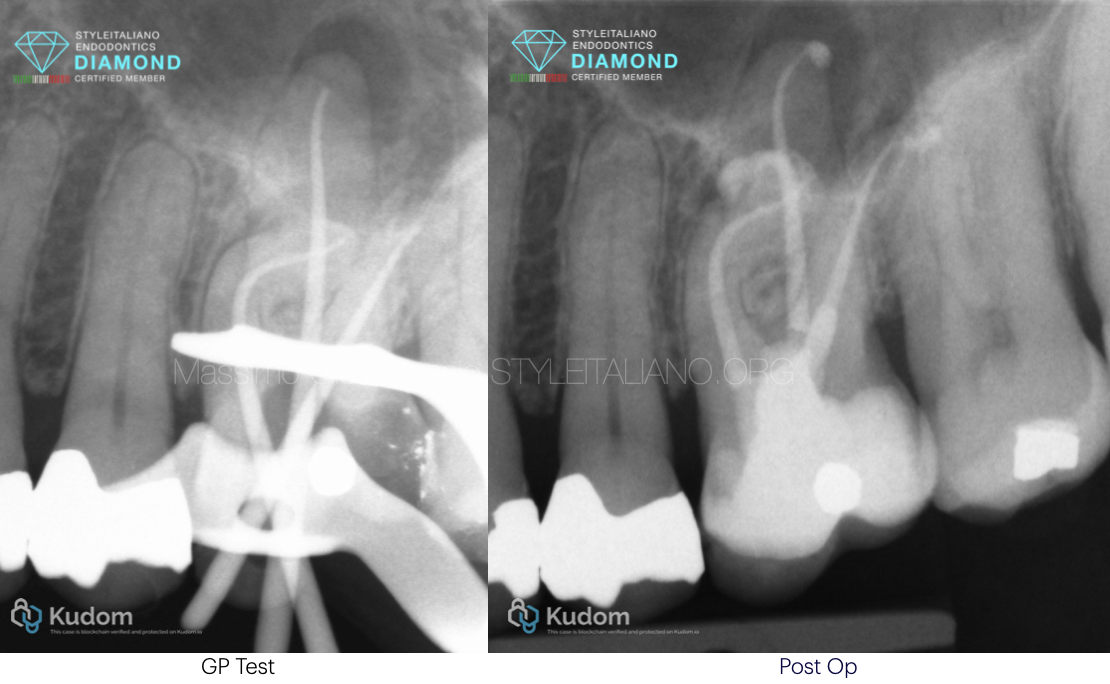
Fig. 5
GP Test is a mandatory procedure to check the right protocol before the final step of obturation. GP master cone on MB canal respected the full root canal anatomy up to the working length due to the property of the instruments. Hydraulic Calcium Silicate Cement (Bioceramic Sealer) has been used for the single cone technique.

Fig. 6
4 months X-Ray healing review, showed a complete “restitutio ad integrum”of the all apical area
4 months CBCT Scan healing review, showed a full “restitutio ad integrum”of the all apical area
Conclusions
The Fanta Rising Endodontic File system offers a powerful solution for managing the most difficult root canal anatomies. It has adaptability in severely curved canals and it is a valuable tool in any endodontist's or general dentist's armamentarium. With its balance of flexibility, cutting efficiency, and safety, the Rising File helps elevate clinical outcomes and reduce retreatment risks.
Bibliography
Bibliography
-Scarfe WC, Levin MD, Gane D, Farman AG. Use of cone beam computed tomography in endodontics. Int J Dent. 2009;2009:634567. doi: 10.1155/2009/634567. Epub 2010 Mar 31. PMID: 20379362; PMCID: PMC2850139.
-Krasner P, Rankow HJ. Anatomy of the pulp chamber floor. JOE 2004; 30(1):5.
-The endodontic Glidepath: "Secret to rotary safety”. John D West Dent Today 2010 Sep;29(9):86, 88, 90-3.
-Goerig AC, Michelich RJ, Schultz HH. Instrumentation of root canals in molar using the step-down technique. J Endod 1982; 8: 550-4.
-Shen Y, Qian W, Abtin H, Gao Y, Haapasalo M (2011) Fatigue testing of controlled memory wire nickel-titanium rotary instruments J Endod 2011 Jul;37(7):997-1001. doi: 10.1016/j.joen.2011.03.023.


